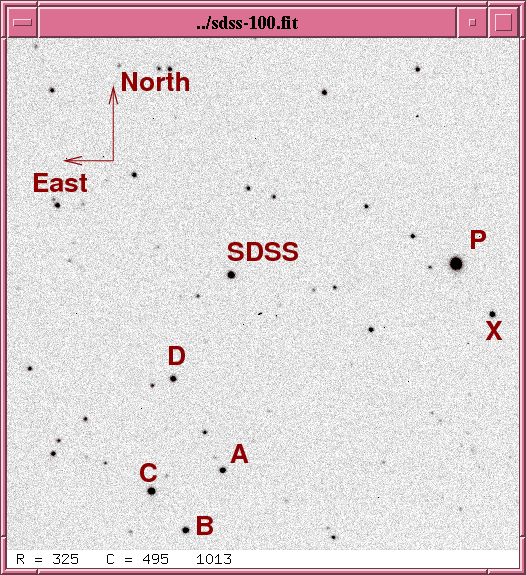
On the night of July 26/7, 2010, I observed the cataclysmic variable star SDSS 162520.3+120309, which is no longer in outburst. It is so faint that my measurements aren't useful, but this night did provide a successful test of using a small telescope to guide to 14-inch.
The setup was:
Notes from the night
This is a chart of the field based on an image from July 6/7. Note how bright the target is -- it's marked as "SDSS".

Here's an image from last night, showing how much fainter the target has grown. It is now roughly 4 magnitudes fainter than it was on July 6/7, 2010.
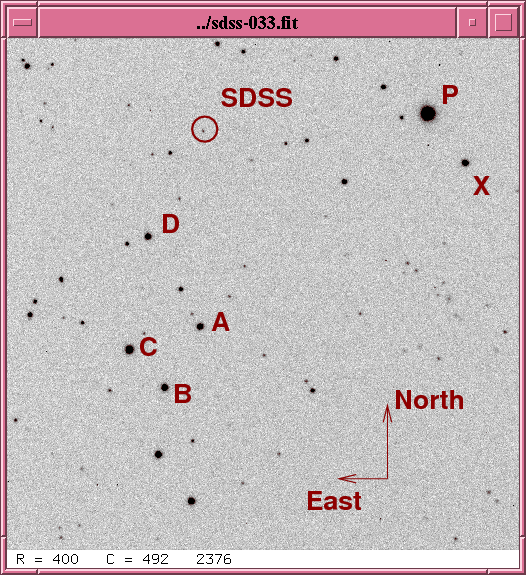
I measured the instrumental magnitude of each star with aperture photometry, using a radius of 4 pixels = 4.2 arcseconds and sky defined by an annulus around each star. Following the procedures outlined by Kent Honeycutt's article on inhomogeneous ensemble photometry, I used all stars available in each image to define a reference frame, and measured each star against this frame.
One output of the ensemble solution is the value of the zero-point of each frame relative to the others. In the graph below, I plot this zero-point as a function of time. There's a gradual rise as the field sinks lower into the western sky.
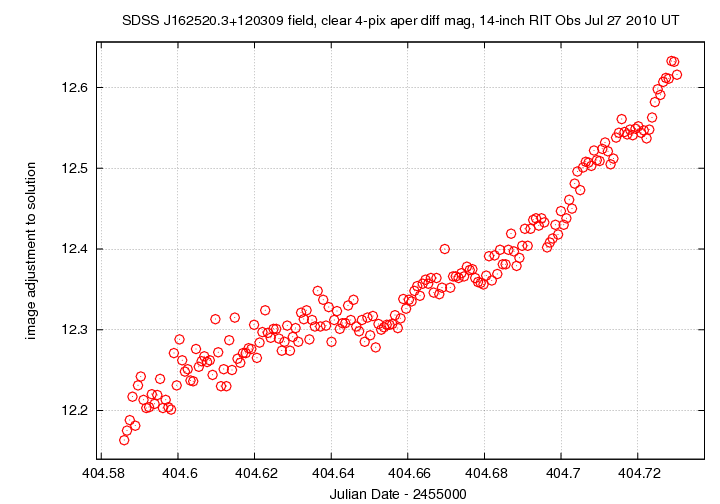
Below is a graph of the scatter in differential magnitude versus magnitude in the ensemble solution.
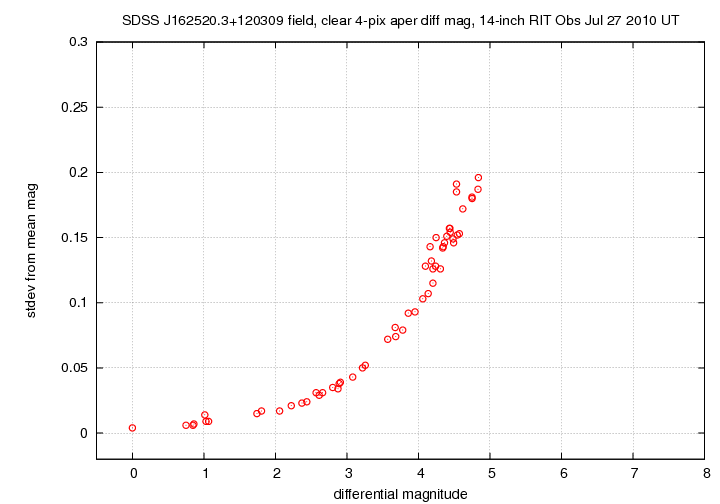
The floor of this diagram corresponds to a scatter of about 0.005 mag, which is good -- perhaps as good as I've seen from the SBIG ST-9 camera. There are two reasons for this smaller scatter:
The star with very slightly elevated scatter near differential magnitude 1.0 is star "D", which several people have noticed as a variable star with a period of a good fraction of a day.
Light curves for selected stars (SDSS162520 and stars A - D, as well as X) in the field are shown below. The target is shown by light green crosses. There is so much noise in the measurements that I don't feel comfortable distributing the photometry in tabular form. Using the fact that star "A" has magnitude V=13.8, the target must be around V=18 on this night. My CCD signal-to-noise calculator suggests that the signal-to-noise for these measurements should be around S/N = 5, which is a good match for the frame-to-frame scatter of about 0.2 mag. So, I'll just have to conclude that this target is too faint for me to follow right now.
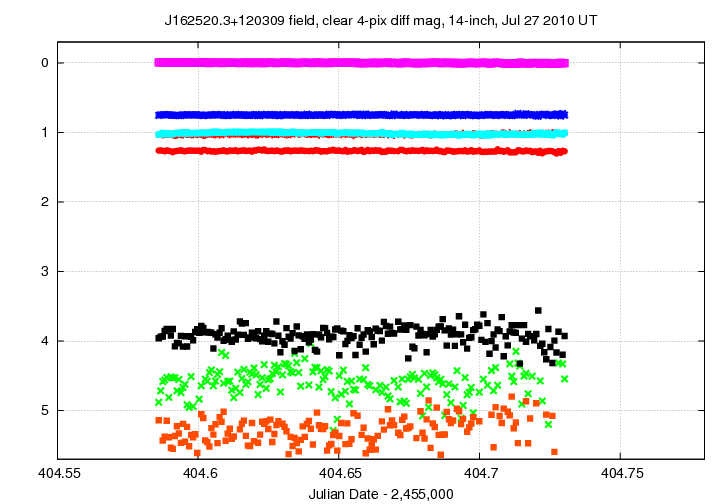
However, the night's work did feature some success. For the first time, I used a small telescope mounted on the side of the main Celestron 14-inch to act as a guider. The setup was:
There were a few little items I had to figure out -- it's necessary to run the Pinnacle video editor program once after connecting the video capture unit to the computer, before one can read its signal with PHD Guiding, for example -- but when I put it all together, it worked! The field of view of the video camera is about 20 x 14 arcminutes (plate scale of about 1.7 arcsec per pixel at 640x480 video format), and I believe that I can see stars down to about ninth magnitude with it. I'm not sure which star I was using to guide last night on the SDSS 1625 field; I couldn't find a guide star when the guide scope was aligned with the main telescope, so I fiddled with the pins holding the guide camera in its rings until the field shifted to reveal a star. I used a 3-second exposure time (actually, video frames co-added to generate an effective 3-second exposure time) for the guide star, and let PHD Guiding do its own calibration of the mount.
There was some small shift in the position of stars in the main CCD over time, due to flexure in the guide telescope's connection to the main telescope, I think. The figure below shows the drift in position of the stars as a function of image index number; since the exposure time was 60 seconds, the x-coordinate of the graph is roughly "time in minutes". The drift in RA was pretty constant, at about 0.14 arcseconds per minute. The drift in Dec was nearly zero for more than an hour, but eventually started to increase, to average about 0.09 arcseconds per minute.
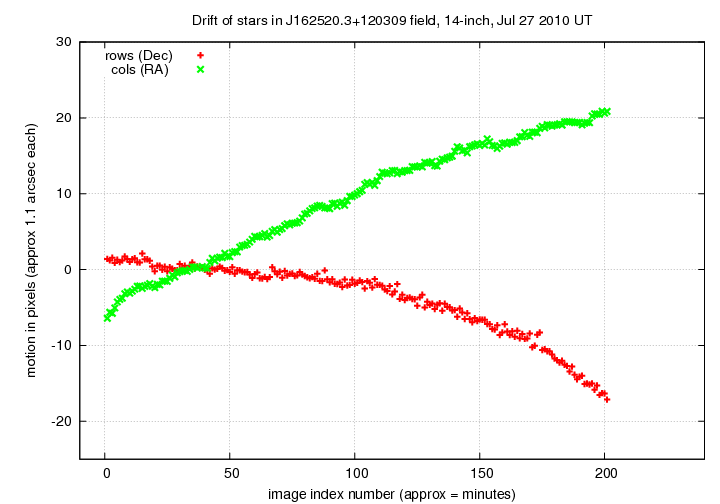
As long as I keep exposure times under, say, 5 minutes, this arrangement should be just fine. It would be nice to have a better way to adjust the alignment of the guide telescope, though.
Last modified 7/27/2010 by MWR.